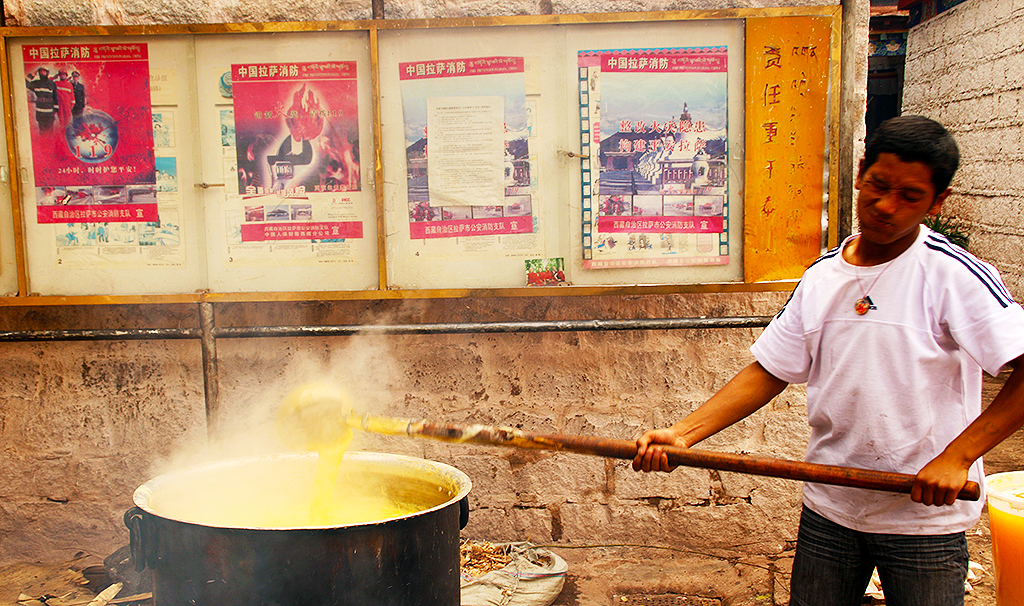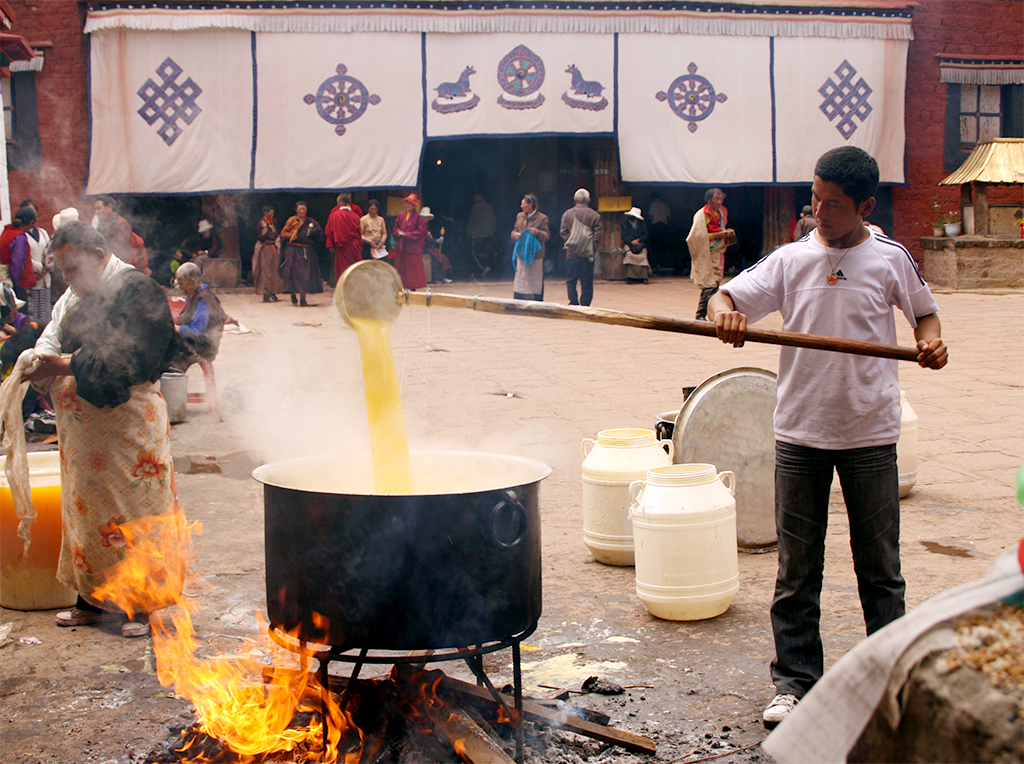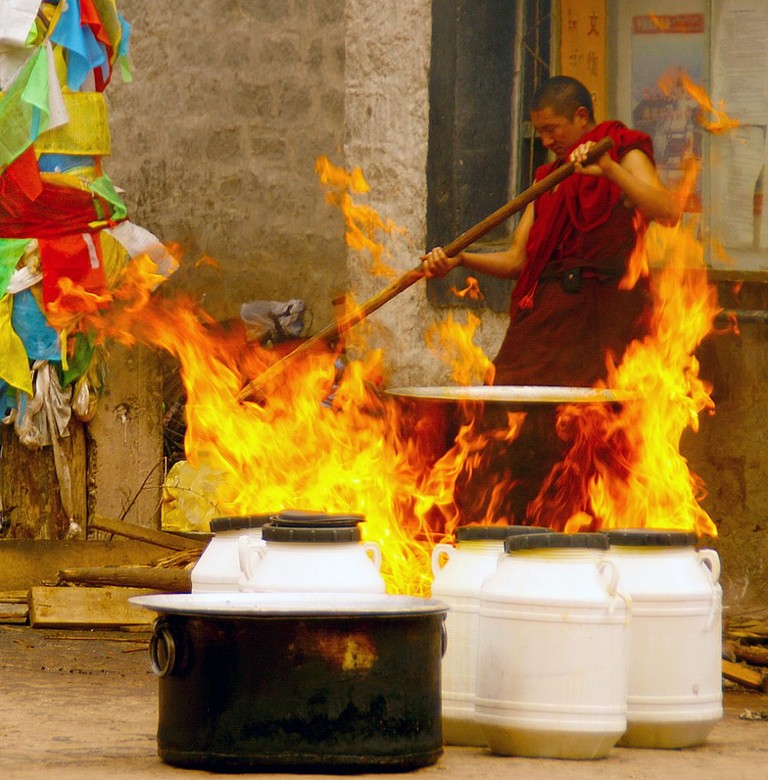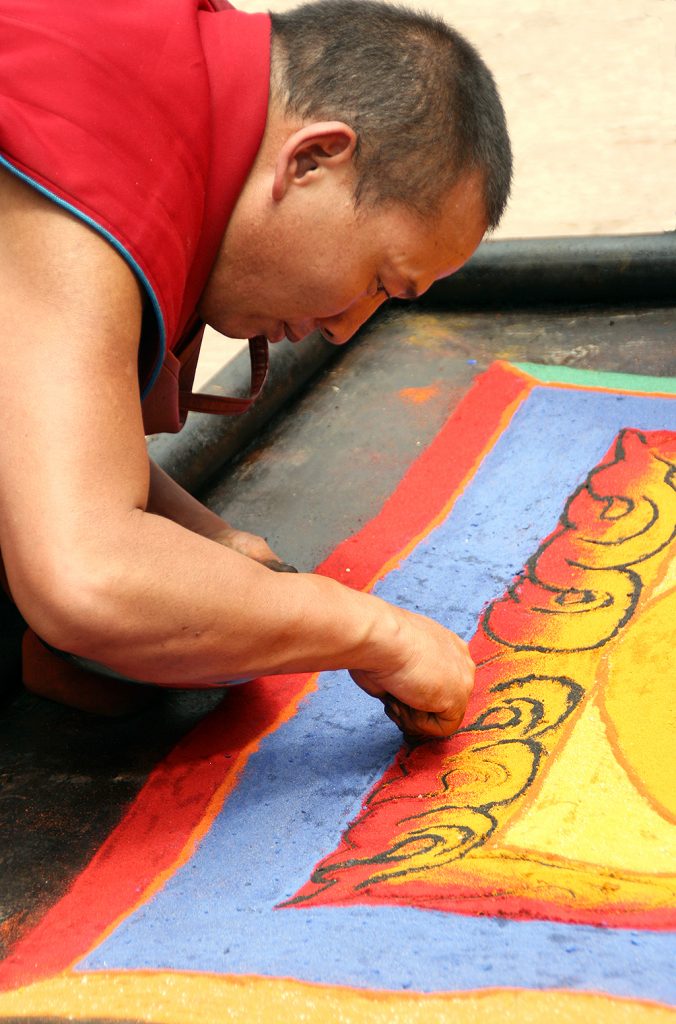
Remoche Temple Candle Making
Remoche Temple Candle Making (酥油灯; SŪYÓU DĒNG) is an incredible spectacle to behold. I doubt if much has changed since the construction of the temple in 7th Century. Below is the account of our visit in August 2007 when travelling for foreigners in Tibet was at its most relaxed in decades.
YAK BUTTER CANDLE MAKING AT THE RAMOCHE TEMPLE 小昭寺XIǍOZHĀO SÌ LHASA Tibet
The three story Ramoche Temple (小昭寺XIǍOZHĀO SÌ), in the heart of Lhasa, just a short walking distance away from the Bakhor, is an alluring temple to visit when you are in Lhasa. So close to the hustle and bustle of modern life yet still bursting with old traditional Tibetan rites

Ramoche Temple Origins
Originally Built around the same time it’s more famous sister temple, the Jokhang temple (at some point during the Tang Dynasty), probably between 649 and 676 during the reign of Mangsong Mangsten, the Ramoche temple has been destroyed and rebuilt more than once during its turbulent history.

A Strong Smell
Your nostrils detect the oily, buttery, smell of boiling yak butter long before you actually you arrive at Ramoche. The air in and around the temple is filled with the unmistakable smell of Yak butter; it permeates everything from the walls of the temple to the clothes of the pilgrims.

On Arrival
During much of the day Ramoche is a hive of activity, with throngs of visiting pilgrims, the odd tourist group, resident monks, caretakers, , sand using mandala makers (The mandala represents an imaginary palace that is contemplated during meditation), and finally, the unmissable yak butter candle makers.

Devoured by the Soaring Flames
As you watch the yak butter makers go about their trade, there are moments when you think they are going to be entirely devoured by the soaring flames. At other times, their faces are forced to wince and scrunch up at the scorching heat and the spitting fat that leaps out of the cauldrons.

Ramoche Temple Candle Making. The process is non-stop
The process is non-stop; with someone always on hand to take over when a worker is flagging. Sometimes its a monk, other times it’s a care taker, and at other times pilgrims join in.

With the yak butter candles inside the temple burning almost 24/7, it’s no wonder that the butter making process is relentless and continuous.

The heat generated from the cauldrons can be felt around the main square in front of the temple. Monks and workers use enormous wooden handled ladles to stir the molten liquid and then scoop it out and pour it in to buckets for the gooey fluid to cool.

Ramoche Temple Candle Making. The pilgrims lend a hand
At the same time other pilgrims are adding more butter to the cauldrons. The pilgrims believe that by bring their own yak butter they will gain merit.

When the butter has cooled, it is taken inside the temple, where an army of helpers fill the empty candle holders. Like the melting process outside, cleaning and preparing the candles seems to be an around the clock activity.

As soon as a new candle is prepared, there is always a newly-arrived pilgrim ready to burn it. And so the cycle goes on.

Making Sand Mandalas 沙坛城; Shā Tánchéng
If you are lucky, you might also catch the monks making sand mandalas 沙坛城; Shā Tánchéng .

One of Tibetan Buddhism’s most bizarre activities; the monks can spend hours, days or weeks preparing these incredibly beautiful and ornately coloured sand mandalas; only then to destroy them after a ceremony.

Why? To demonstrate the Buddhist belief that nothing is permanent.

For More on Tibet click here: Gyanstse and the Kumbum
